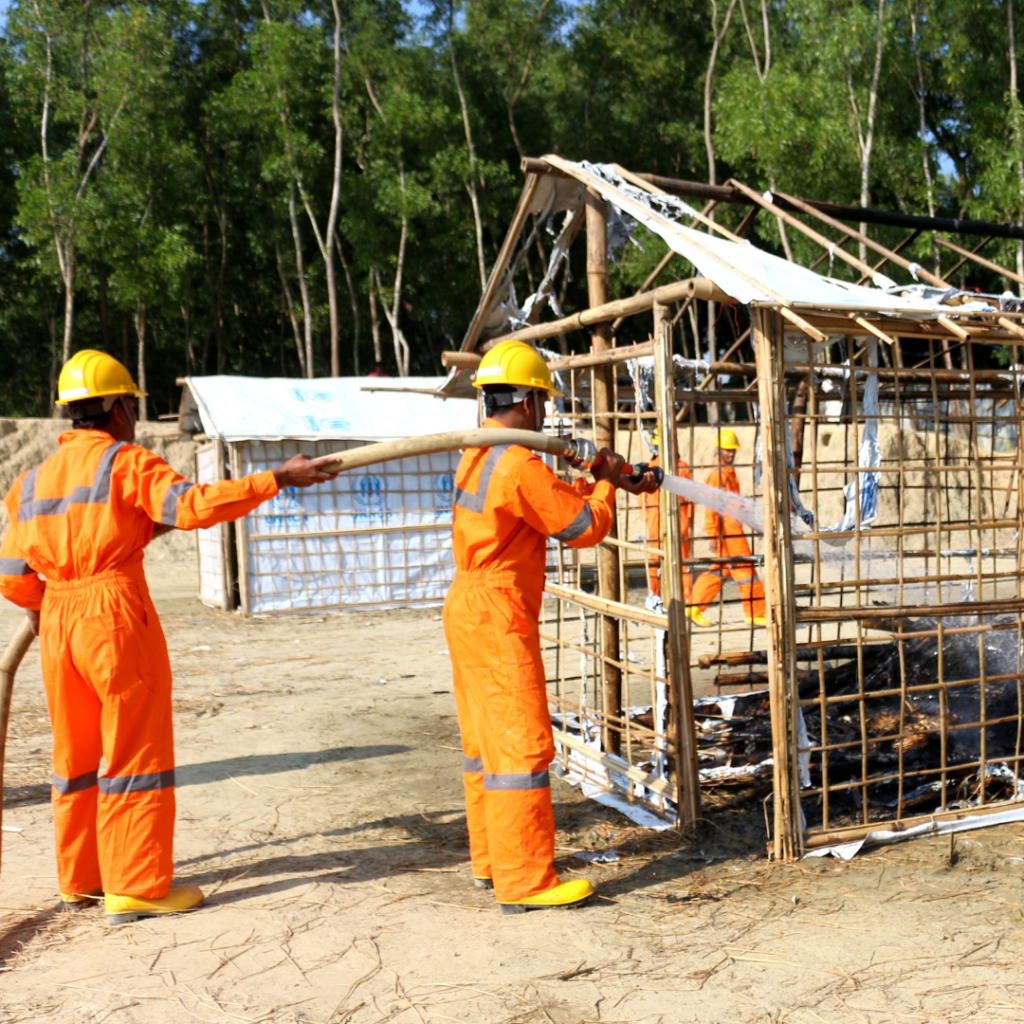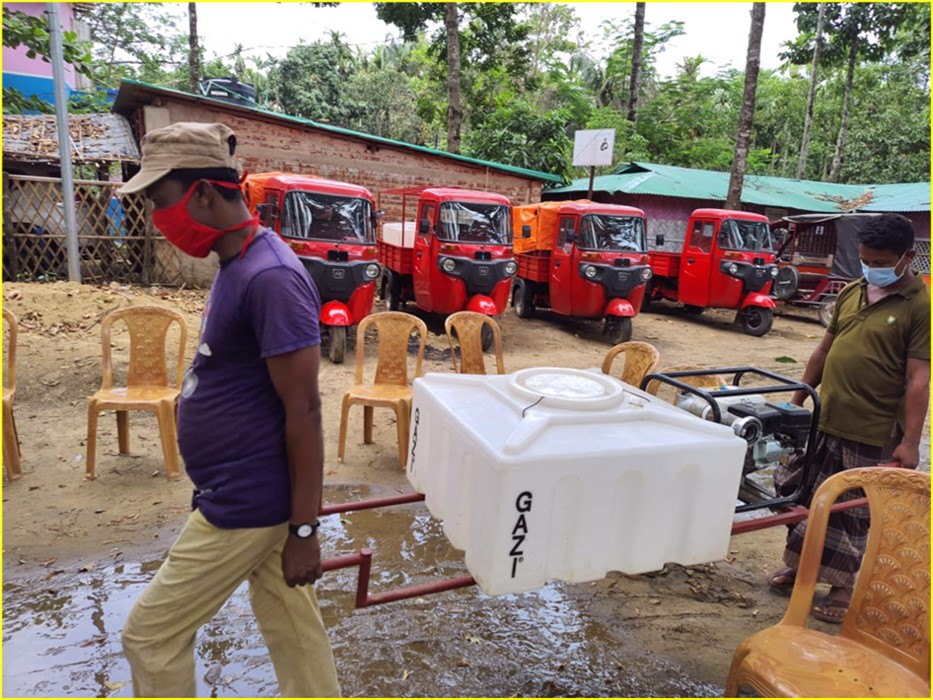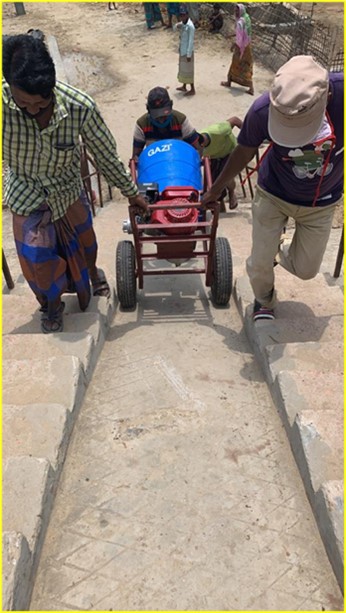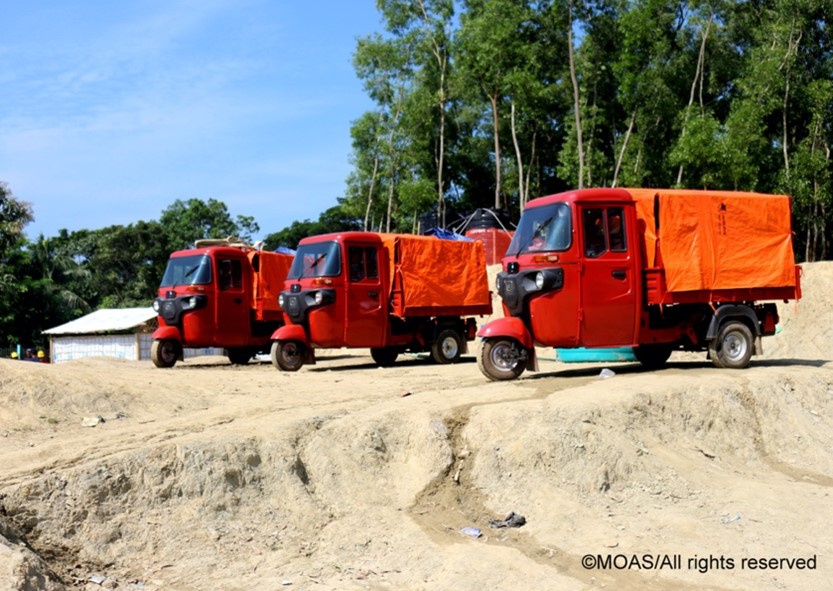 Did you know it can take just a few minutes for a small flame to turn into a full-blown life-threatening fire? Is that enough time to get to safety? Fire is a major threat in many refugee camps worldwide. Scenes of refugee shelters engulfed in flames, and families later picking through piles of ash, have become all too common a sight at refugee camps. Such disasters only further compound the trauma experience by people who have already been forced to leave their homes. Fire Risk Reduction is desperately needed in large scale displacement settings, but until now there has been little in-depth research in this area.
Did you know it can take just a few minutes for a small flame to turn into a full-blown life-threatening fire? Is that enough time to get to safety? Fire is a major threat in many refugee camps worldwide. Scenes of refugee shelters engulfed in flames, and families later picking through piles of ash, have become all too common a sight at refugee camps. Such disasters only further compound the trauma experience by people who have already been forced to leave their homes. Fire Risk Reduction is desperately needed in large scale displacement settings, but until now there has been little in-depth research in this area.
Fire extinguishers have been the go-to fire-fighting tool in humanitarian responses around the world, but when faced with the rapid spread of fire across camp infrastructure, they are simply not up to the job.
It is important to understand how fire behaves. Typically, most training given to people in refugee camps is for the use of fire extinguishers – that is, the same kind of fire-fighting you would do in a typical house. However, crammed-together tarpaulin shelters are far more flammable than standard housing materials, and wildfire specialists have advised MOAS that campfires behave in a similar way. Our current research focuses on how to better address fire risks in displacement settings.
A 5kg fire extinguisher is the standard recommendation for UK offices and is also generally provided in refugee camps. Yet, the fire-load (the level of burnable material) in a tarpaulin shelter (like the one used in Cox’s Bazar), is about three times that you find in a standard UK office – and that’s before you take into account the LPG cylinders provided for cooking stoves at the camps. So, how can these extinguishers effectively put out the fire?
The risks are exacerbated by a local reliance on plastic for everything, from shoes to furniture. The material is extremely flammable and toxic when it burns, and melted plastic can do particular damage to skin. The impact of fires in refugee camps must not be measured in fatalities alone. These fires also cause life-changing injuries, mental traumas and loss for people who have already experienced great suffering.
Emergency responses frequently lack context-specific fire-fighting equipment and planning. There’s a tendency in large scale humanitarian responses to address problems through mass distribution of standard equipment or materials, but when it comes to fires, that is simply not effective. In the camp environment, the shelters are made of things that will burn excessively. Fire extinguishers are designed for use in buildings that are made of brick and concrete and cement, which will not burn.
MOAS Fire Safety and Response
In response to the recent increase in the frequency and severity of fire outbreaks in crowded refugee camps, MOAS technical experts developed a one-of-a-kind Disaster Risk Reduction project for Fire Safety and Response. They started to develop ideas incorporating water because it’s cheap, easily available, and effective. MOAS’ specialists developed different carrying platforms and portable pumps that refugees can easily manoeuvre to water containers and draw water. So, lets take a look at the different response equipment!

This is a Soft Backpack Water Container (maximum 20L) with a hose to a hand-pump nozzle. The operator pumps the nozzle to fire a jet of water.
Here we have a Carry Frame! This is Petrol powered water pump mounted on a frame that is carried like a stretcher by to to four people. It draws from a bulk water point using a 5ft intake hose. This Includes a 150 ltr water tank, for use as a pumping relay.
The Wheelie is a Petrol powered water pump mounted on a wheeled frame, that can be pushed by one person. It draws from a bulk water point using a 5ft intake hose. This includes an empty 60 ltr water tank for use as a pumping relay.
The Tuk Tuk is a Diesel-powered Bajaj Cargo Maxima C (also known generically as a “tom-tom”) with a custom-made frame unit in the load-bed carrying a water tank with baffles and a petrol-powered water pump.
And finally! The Trailer is a custom-made, tractor-towed trailer, carrying an intermediate bulk container (IBC) with petrol-powered water pump.
Of the five solutions MOAS has designed, the wheelie frame is extremely versatile for camp infrastructure. In steep terrain, the MOAS carry frame will be easy to move around. We’re expecting to see hundreds of these two platforms in the camps, along with MOAS tuk tuks, and thousands of Fire-fighting backpacks.
The big advantage of these systems is they throw a lot of water very quickly, about 250 litres a minute, which is equivalent to dozens of fire extinguishers all sprayed at the same time. It throws water a long way, so the refugee firefighters can stand 20 meters away from the fire and fight it using the water jet safely, to diffuse the fire. Thanks to this equipment, the MOAS volunteer response team can have some volunteers working the pumps and providing a high volume of water, and a secondary wave of volunteers with backpacks who can extinguish any lingering flames. It’s a much more efficient use of water, the programme introduces some wildfire firefighting tactics so that volunteers can prevent further large-scale fires.
The portable wheelie frame and carry frame don’t carry their own water, so a critical part of this whole project, is the installation of around 1,500 (1000 litre) water tanks at key locations spread across the camps. In the event of a fire, the team can easy access their nearest pump, take that to the closest water tank, and draw water immediately.
While manufacturing the equipment, MOAS will continue to train refugee volunteers on how to use the equipment safely and effectively. The Training offered by MOAS’ technical experts is provided equally to both men and women volunteers. Everyone is invited and they play an essential role in saving lives during fire-related emergencies.
Final Thoughts
It can take just a few minutes for a small flame to turn into a full-blown life-threatening fire, but with MOAS specialised fire equipment, designed as part of the Disaster Risk Reduction (DRR) project, refugee volunteers can be trained to mitigate this risk, and save lives. Our innovative equipment and bespoke training are the first of their kind, and it builds on a deep understanding of the refugee-camp context. Not only will this initiative save lives, but by harnessing local capacities and offering leadership opportunities in the field, MOAS is ensuring that DRR is locally driven and provides opportunities to the local community!
If you are interested in the work of MOAS and our partners, please follow us on social media, sign up to our newsletter and share our content. You can also reach out to us any time via [email protected]. If you want to support our operations, please give what you can at www.moas.eu/donate.


